The information in this article was obtained from a web site in the USA.
I thought it best to get correct data from an authority on the subject
I have placed her domain link at the foot of this posting for your further reading
The Outdoor Apothecary is reader-supported. When you buy through links on our site, we may earn an affiliate commission. Learn more
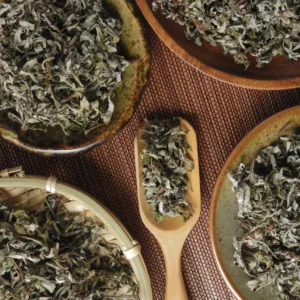
Credit image Barbi Gardiner
All passionate foragers have their spots where they know certain herbs and medicinal plants grow, and I have mine. One of those is my spot for mugwort (Artemisia vulgaris). Along the edges of a large field full of tall grasses that abuts part of the Quinebaug River Wildlife Management Area, mugwort grows prolifically. I could pick as much as I could possibly need and then some. I’m happy to say that it won’t be long now before I’m there again harvesting this beneficial and magical plant.
What is Mugwort?
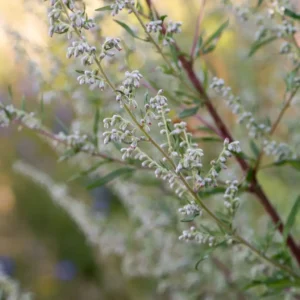
Credit image Barbi Gardiner
Mugwort is a species of flowering plant in the daisy family Asteraceae. It is one of several species in the genus Artemisia commonly known as mugwort, although (Artemisia vulgaris) is the species most often called mugwort.
Many people who see this plant growing, think it’s just a weed, but we herbalists and wildcrafters know better. Mugwort is a stately, self-assured perennial plant that can reach heights of over six feet. Its tall summer presence is found in many locations, ranging from waysides, roadsides, waste grounds, and between forests and fields. Its magical, culinary, and medicinal properties have been known and valued by cultures throughout history.
History, Folklore, & Magic?

According to tradition, mugwort was known as the witch’s herb and aptly renamed by some as cronewort. Historically, it was placed by the door of the local witch, healer, and midwife. It was also used as a symbol that would be hung on the door or planted outside.
Its scientific name, Artemisia, may give us a clue as to the powers of this herb. Named after the Greek moon goddess Artemis – who was known for her patronage of women in all phases of their lives, especially at the onset of menstruation, in childbirth, and during menopause – it is easy to see what uses this herb has.
This plant has earned the title “mother of herbs” for its use in treating female reproductive disorders and for regulating menstrual cycles. Some people call it ‘the old woman’ and consider it to be a manifestation of ancestral wisdom and feminine qualities.
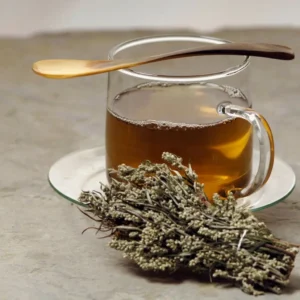
Credit image Barbi Gardiner
In shamanistic cultures, it was used to facilitate communication with ancestors and the spirit world; people drank it as a tea or tonic at bedtime or placed bundles of the herb under pillows to induce lucid dreams.
In medieval times, this herb passed from the pagan goddess Artemis to the Christian saint John the Baptist. The saint carried the herb into the wilderness with him to ward off evil. This led to “St. John’s Girdle” and the wearing of a mugwort garland on St. John’s Day while dancing around a ceremonial fire. The garland would be tossed into the fire to ensure protection for the following year. In some places, this ritual is still performed today.
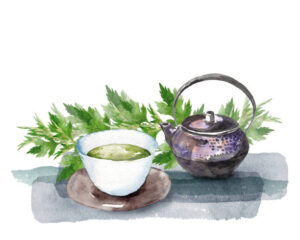
“There is no herb that I know of, more imbued with folklore and superstition than mugwort, a plant for which I have a deep affinity likely due to my belief in the magical properties of plants. It is an ancient magical herb with curative and divinatory properties, bearing a special value in feminine disorders and warmly strengthening the body”.
Identification
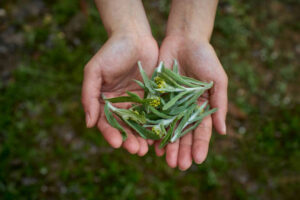
Knowing how to identify mugwort’s leaves, flowers, and stems can help you confidently identify them in the wild.
Leaves: The plant’s leaves are a strong identifier. Leaves are 1 to 4½ inches long, up to 3 inches wide, and deeply divided into finger-like, wedge-shaped lobes along the central vein. They are hairless on top, but they have a silvery-white, downy underside. If you are familiar with the smell of sage, the plant should smell similar.
Flowers: Flowers consist of small, yellow and reddish-brown heads that sprout from the upper parts of the plant in branching clusters. The flowers have seven to ten pale yellow thread-like pistils extending from the center. The stems, stalks, and bracts are light green from a covering of frosty hairs.
Stems: Multiple reddish-colored stems grow from the ground, smooth and unbranched in the lower plant, but becoming much-branched with short, matted hairs in the flower cluster.
Mugwort Look-alikes
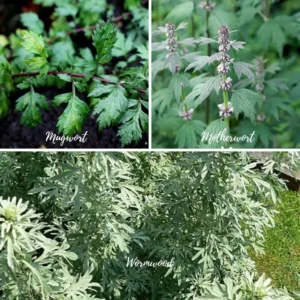
Mugwort has several look-alikes. Two of the most common here in the Northeast are wormwood and motherwort.
People often confuse mugwort with wormwood or use the names interchangeably thinking they are the same plant, when in reality mugwort (Artemisia vulgaris) and wormwood (Artemisia absinthium) are two different herbs from the same family, the Artemisia genus.
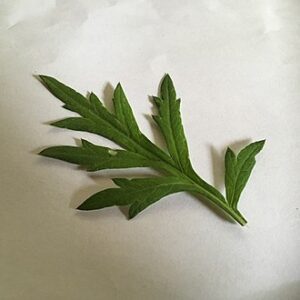
One way to tell them apart is to look at the leaves. Mugwort leaves are green on the top and white underneath, with pointed tips and purplish stems, while wormwood leaves are silvery on top and bottom, with flowers that are much showier. Also worth pointing out is wormwood is the main ingredient in the infamous drink absinthe.
Motherwort and mugwort plants are similar in appearance, but distinct characteristics set them apart. Mugwort leaves are white-woolly and almost silvery on the underside, while motherwort leaves may be slightly hairy and will be the same color on top and bottom. Motherwort has its own folklore and history of medicinal use for heart ailments. Additionally, it was used to remedy nervousness, dizziness, and other disorders of women (an interesting addition to the garden I think). Barbi Gardiner.
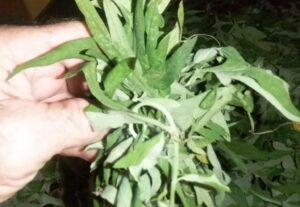
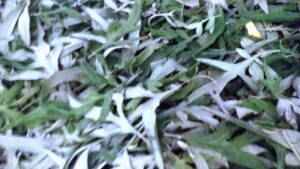
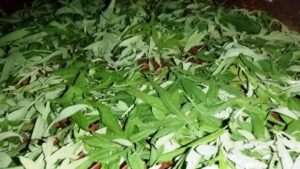
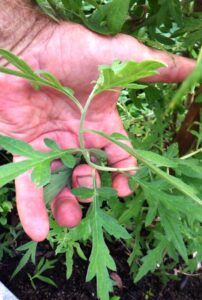
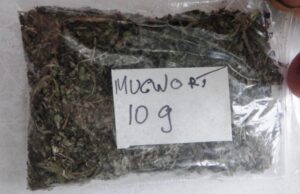
It is grown at the Fraser Coast Queensland Australia & hand picked by myself
Mugwort seeds, leaf & plants are available here on this site most times
Quantity discounted buys are available. I always have sun-dried mugwort leaf.
** MORE MUGWORT INFO FROM OUTDOOR APOTHECARY SITE >> HERE
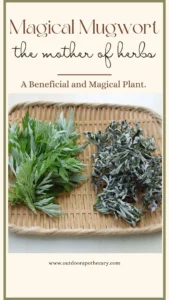
 Any questions or if buying, contact me HERE
Any questions or if buying, contact me HERE
![]()

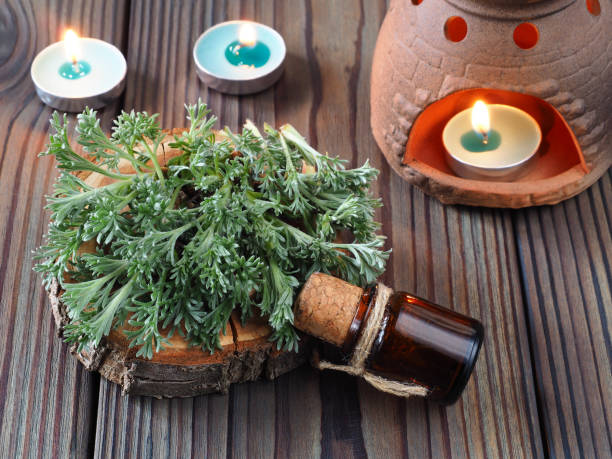
Recent Comments